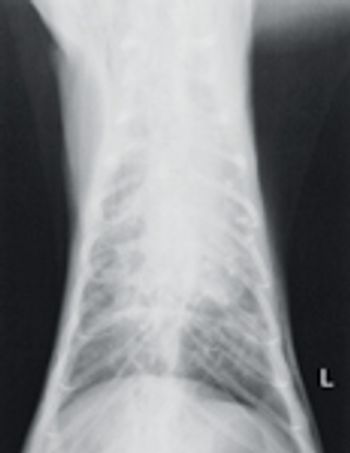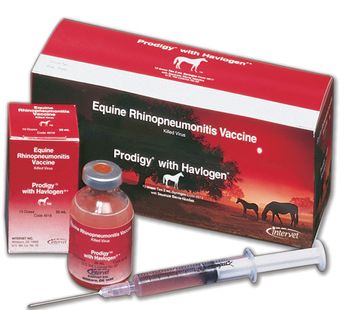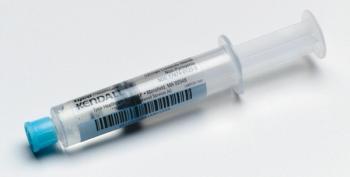
Ottawa-Veterinarians in Canada are working to form a national public health organization dubbed CDC-North.

Ottawa-Veterinarians in Canada are working to form a national public health organization dubbed CDC-North.

We use the bladders from emptied 2-gal wine boxes as heating pads for animals.

What's your question? Send your pediatric/geriatric related questions to: Pediatric/Geriatric Protocol, DVM Newsmagazine, 7500 Old Oak Blvd., Cleveland, OH 44130. Your questions will be answered by Dr. Hoskins in upcoming columns.

Iowa State Press introduces Veterinary Microbiology, Second Edition by Drs. Dwight C. Hirsh, N. James MacLachlan.

When we put a warning label on a bottle, such as "May increase urination" or "Give with food," we put the same label next to the prescription in the patient's record, so we know exactly what we told the client.

Spellex Corp. just released its newest addition of spell checking software

Veterinary Dental Concepts introduces a dry-bead sterilizer.

Spectrum Surgical Instruments announces the release of Spectra-Soak.

Maximizing calf survivability is crucial to economic success of beef producers. But having healthy calves starts many months before calving season. Proper herd nutrition impacts calf survivability more than any other factor. Proper environment/facilities also are important. If these two factors are under control, herd outbreaks of calf diseases will be minimized.

Spectrum Surgical Instruments introduces its stainless steel box designed to sterilize and protect small parts.

Last summer, an epizootic of paraquat poisoning caused the deaths of at least seven dogs in Portland, Ore. This epizootic is evidence that this type of poisoning remains a current problem in companion-animal practice in North America.

Blacks make up less than 1 percent of students studying veterinary medicine

A 9-year-old neutered male domestic shorthaired cat had been presented to the referring veterinarian for evaluation of lethargy and weight loss.

San Francisco Veterinary Specialists (SFVS) bills itself as the only specialty referral hospital in the city, offering internal medicine, dentistry, oncology, surgery, ophthalmology and holistic care.

Designed specifically for veterinary use, Kendall's Monoject Veterinary? catheters feature a special needle grind that minimizes pain and creates a smooth transition for the thin wall catheter, the company says.

To keep patients warm during and after surgery, we insert sheets of flat bubble wrap into flannel pillowcases and drape them over patients.

TOPEKA, KAN.-Hill's Pet Nutrition Inc. and the American Veterinary Dental Society recently announced the Windsor Veterinary Clinic in Windsor, Colo., is the grand-prize winner of the 2004 National Pet Dental Health Month Awareness Contest.

GAINESVILLE, FLA.- The University of Florida College of Veterinary Medicine (UF) is believed to be the first to train students using a human patient simulator to learn anesthesia techniques.

Reference ranges are established by testing a group of apparently healthy normal animals. But even if a value falls within the reference range, it may not be normal for that animal if the animal is ill.

Absorbine? Veterinary Liniment Gel contains botanical extracts and topical analgesics that help horses heal themselves. Liniments are mild stimulants to the circulatory system that aid fatigued muscles, joints and tendons to normal.

Creekridge Capital will focus on establishing national and regional leasing programs with vendors targeting the veterinary market.

Intervet Inc. announces the availability of Prodigy? with Havlogen? as an aid in the prevention of abortion and respiratory disease associated with Equine Herpesvirus 1 (EHV-1) infection. EHV-1 is the leading cause of infectious viral abortions in mares.

Veterinary Product Laboratories (VPL) has introduced an easier way to apply Tissuemendsu ? II, a synthetic, absorbable surgical tissue adhesive available to veterinarians.

A half-sedated goat can still outrun me for the first 250 yards if it gets loose.

TOPEKA, KAN.-Hill's Pet Nutrition Inc. and the American Veterinary Dental Society recently announced the Windsor Veterinary Clinic in Windsor, Colo., is the grand-prize winner of the 2004 National Pet Dental Health Month Awareness Contest.

This cat owner emergency easily licked by speedy stool sample analysis

PHILADELPHIA-The 141st American Veterinary Medical Association (AVMA) convention showcased Beastly Bug Rounds, the title given to a session conducted by Joseph Taboada, DVM, Dipl. ACVIM, School of Veterinary Medicine, Louisiana State University.

Monoject prefilled syringes are heparinized and ready-to-use, saving time and eliminating cross contamination.

The Andis Company introduces a quiet pivot motor horse clipper.

Four Flags Over Aspen, Inc., offers veterinarians pet body bags that provide bereaved clients with a considerate, professional touch, the company says.